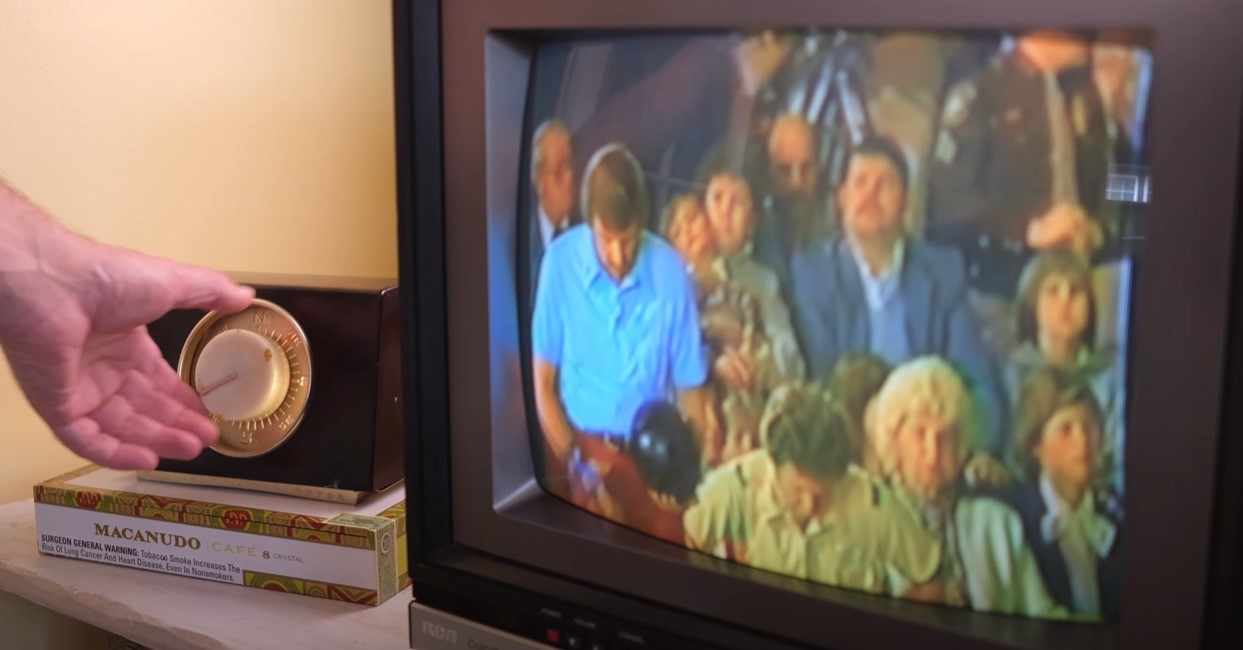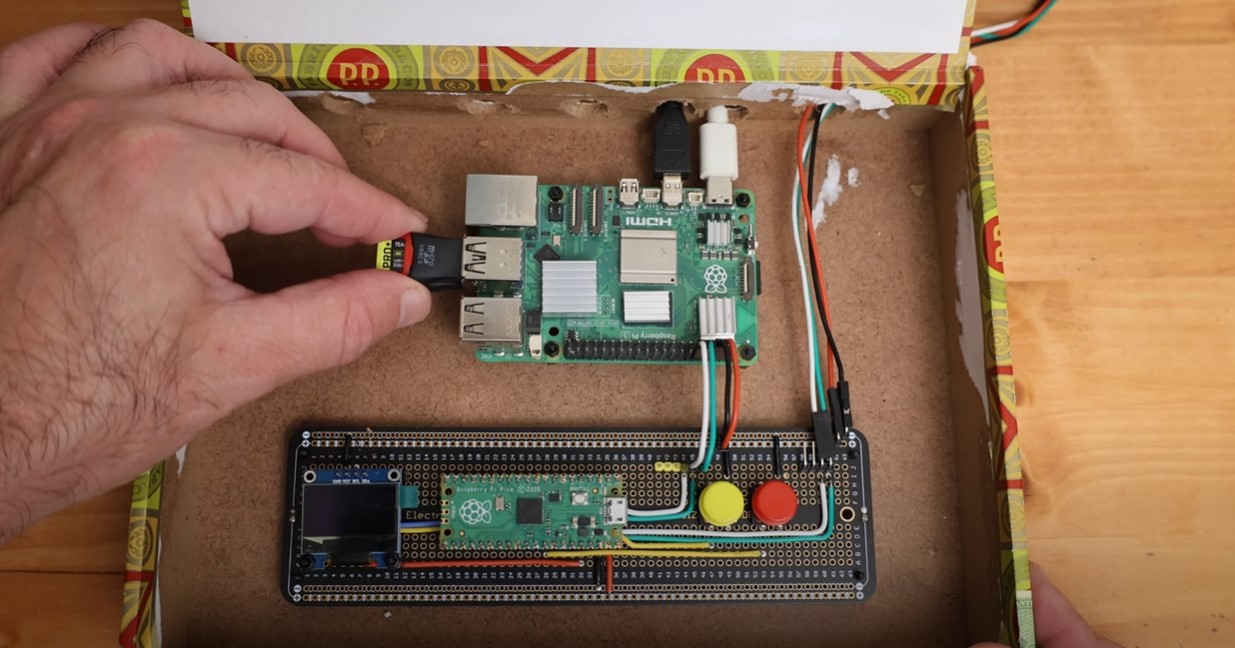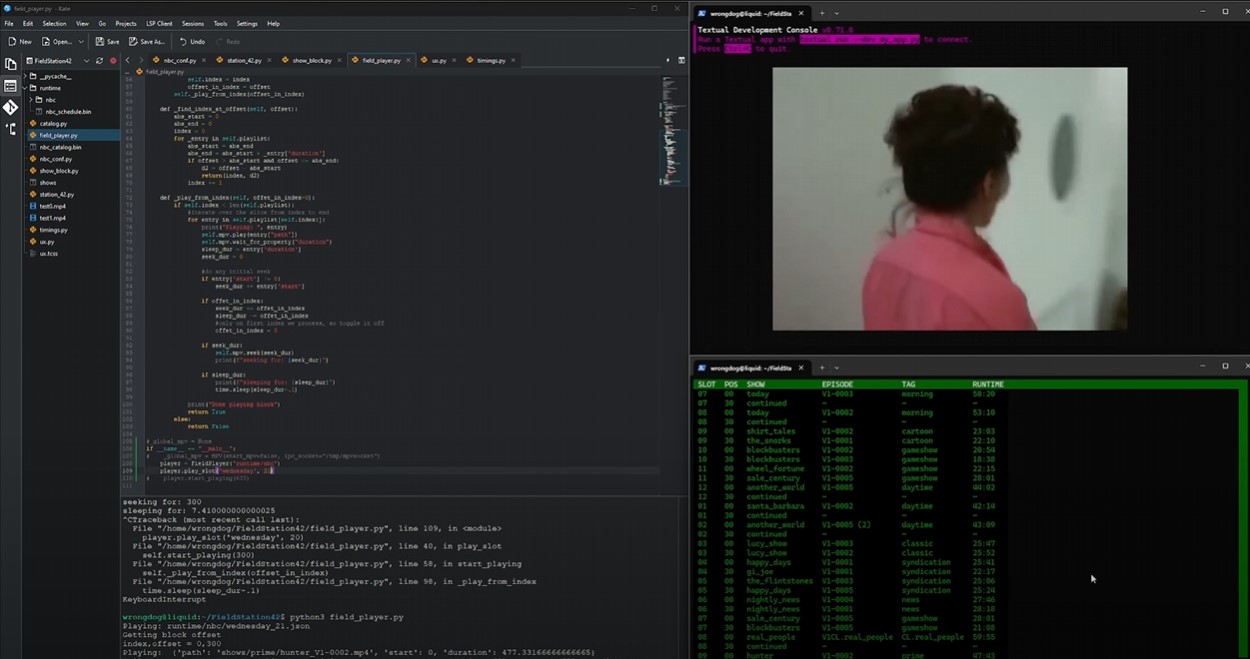Raspberry Pi 5 powers the ultimate 'nostalgia machine' to bring 1980s television to 2024
Saturday morning TV – bring your own cereal

Television as it was, is no more. The plethora of streaming options has made a large dent in traditional TV's dominance. With nostalgia, we look back at the bygone days where we had to wait for a programme to air, missing an episode could ruin a character or story arc. For some of us, this is still a deeply held and cherished memory. The latest retro-themed project from Wrongdog Reckons (Shane Mason) sees the recreation of 1970s and1980s-era television experience, which has the new Raspberry Pi 5 and the Raspberry Pi Pico buried deep within.
A quick crash course for those of us too young to remember TV in the 1970s and 80s. Mason was brought up in the Blue Ridge Mountains, North East Georgia in the 1970s, long before cable and satellite television was a thing. Over-the-air broadcast television was beamed into your home, and this was a problem for where Mason lived, as the mountains would block the signal, requiring a larger antenna to stand a chance of picking up a signal. Depending on cloud cover or natural obstacles, your choice of TV channels could be limited to a single channel. With no way to record, pause or rewind, you had to be there to watch the next show.
Focusing on the period between 1978 and 1986, Mason sought to recreate this experience using modern hardware, with the exception of a 1986 RCA television.
This is a glorious build. Housed in a cigar box, to keep the television in pristine condition, the Raspberry Pi 5 handles TV playback duties.
The source of the TV shows is reportedly many VHS cassette tapes, DVDs, and other media being ripped to compatible video files. But this isn't just a simple media player, oh no, it creates a TV schedule with channels that we can switch to, and even cuts period-accurate commercials into the schedule.
The crowning achievement here is that the schedule is aware of what time of day and even what season. Watching on a Saturday morning will show cartoons, Saturday evening is SNL. Tuning in near to the holidays? You'll see holiday specials enter the schedule. That said, we don't think you'll get to see the Star Wars Holiday Special any time soon.



Going back to the cigar box, and the first thing that hit me was the wiring. That is some damn good wiring: neat 90 degree angles, and what looks like an Adafruit prototyping board. There are two buttons on the board, used to control the Raspberry Pi 5 should there be an issue.
Each week the Raspberry Pi 5 constructs the TV schedule using Python and the MoviePY library. This backend script will go through all of the content, sorted into directories on dual micro SD cards, that mimic television networks. Using MoviePY it will add titles and information on the programmes. Mason also built a retro user interface using Textual that enables quick browsing of each "network's" schedule via a terminal interface.
The Raspberry Pi 5 wasn't the only choice of hardware to serve the custom TV schedule. Mason also tested the Orange Pi Zero (which doesn't support hardware-accelerated video playback) and the Raspberry Pi Zero 2 W which does support hardware-accelerated playback. The issue faced by the Raspberry Pi Zero 2 W was that it was slow to "switch channels," breaking the illusion of a period-authentic experience.
Stay On the Cutting Edge: Get the Tom's Hardware Newsletter
Get Tom's Hardware's best news and in-depth reviews, straight to your inbox.
For an extra hit of nostalgia, Mason added a slightly older (but still authentic) means to change channels. Rather than hack into the channel controls on the television, Mason chose to add a rotating aerial antenna control box. Another quirk of analogue television was that different transmitters offered different channels and by pointing your antenna at the transmission source you could view other channels.
The box on top of the television would control a motor on your roof antenna, causing it to spin to face the source. The problem here was that these boxes used 120V AC, something that Mason discovered when an errant screwdriver bridged some terminals. Cutting the cord, and looking inside the unit, they found that the rotating disc made contact with a metal "cog" and this could be used to change the choice of channels. A little copper wire and JB Weld made a good connection for a post, and allowed Mason to read the inputs like a button press.
A Raspberry Pi Pico is used to read the input signals and to send the input to the Raspberry Pi 5 using a UART serial interface. Of course, a NeoPixel had to be involved, after all the original antenna controller was backlit with a nice warm glow. Now the controller can be any color that you would like.
This is a truly exceptional build and Mason deserves huge respect for creating it. The full project can be at Hackaday and all of the code is available on Mason's GitHub repository.
Les Pounder is an associate editor at Tom's Hardware. He is a creative technologist and for seven years has created projects to educate and inspire minds both young and old. He has worked with the Raspberry Pi Foundation to write and deliver their teacher training program "Picademy".
-
artk2219 That was an interesting video to watch, i can definitely believe that the sourcing of content and its programming took the most amount of time by far. I can see how this would be neat to just have running in the background, so you can tune in and be surprised by whats playing. That said, this was definitely a massive labour, and not necessarily something many people would be willing to do on their own.Reply -
SyncroScales Has anyone noticed on television that providers have, sometimes it is in a closed loop or it gets stuck? the channels are not in real time even when selected to be, and if reset cabel box/device the same channels start at the same time and do not allow rewind or fast forward. News channels, entertainment, etc. A stuck loop. This is a similar idea.Reply
The work also shows how capture transfer digitizing content is important.

